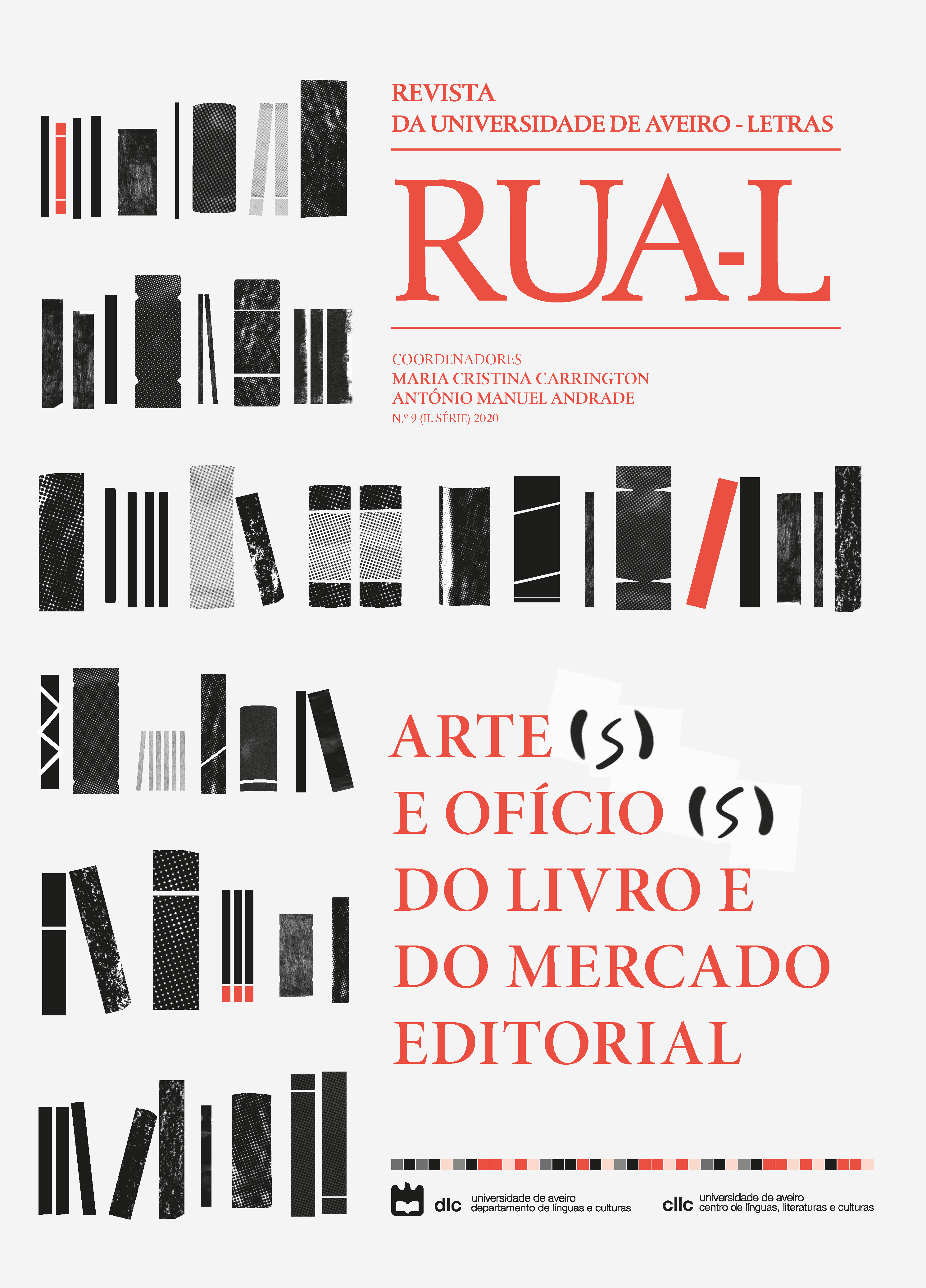Ficção jovem adulto: a relevância dos bestsellers na construção de um cânone alternativo
Resumo
Em Portugal, o rótulo de “ficção jovem adulto” (JA) (em vez de literatura juvenil) é bastante recente e a sua utilização em livrarias e bibliotecas públicas ainda não é frequente, apesar do sucesso de autores, séries e coleções específicas dirigidas a este público-alvo. A cadeia francesa FNAC, presente em várias cidades portuguesas, criou uma área específica (tanto em estantes físicas como na sua plataforma digital) dedicada à literatura juvenil (“jovem adulto”) e a livraria online portuguesa WOOK fez o mesmo no seu sítio na internet. A criação de listas específicas de bestsellers de ficção JA permite-nos identificar as principais tendências (Cart, 2017) no que diz respeito à publicação e leitura desses livros, incluindo não apenas os livros mais vendidos, mas também os autores mais populares. O objetivo deste texto é analisar um conjunto de romances JA sistematicamente presentes em ambas as listas acima mencionadas durante o verão de 2018 em Portugal, refletindo sobre os seus temas, estrutura narrativa e estilo linguístico. A análise inclui a análise dos peritextos, como capas e design gráfico, e epitextos, como recomendações de editores e resenhas online, com o objetivo de compreender a relevância dos elementos paratextuais na determinação do sucesso destes livros. Este estudo tentará identificar as principais tendências da edição contemporânea de JA (Koss & Teale, 2009; Nilsen & Donelson, 2009; Wolf et al., 2010), incluindo a relevância das adaptações de filmes e séries de TV, bem como a influência das redes sociais, no que diz respeito à criação de um cânone de leitura alternativo.
Referências
BICKMORE, S. (2012). The best-selling adult novelist and young adult fiction. In J. A. Hayn, & J. S. Kaplan, Teaching young adult literature today: Insights, considerations, and perspectives for the classroom teacher, pp. 185-202.
BOWERS, Shelby D. (2015). Judge a Book by Its Cover: An Exploration of Book Marketing in the Young Adult Genre. Bachelor Thesis. Tucson: The University of Arizona.
CART, Michael (2017). Young adult literature: From romance to realism. Chicago: American Library Association.
DIONNE, Claire (2017). They’re making it into a movie: The trend of adapting teen novels to the big screen. YA Hotline, 104, pp. 44-48.
FALCONER, Rachel (2009). The crossover novel: contemporary children’s fiction and its readership. New York: Routledge.
HOWELL, Robyn E. (2011). Young Adult (YA) Literature: Details and Trendsetting. MA Thesis. Warrensburg: University of Central Missouri.
KOSS, Melanie Debra / TEALE, William H. (2009). “What’s Happening in YA Literature? Trends in Books for Adolescents.” Journal of Adolescent and Adult Literacy, 52 (7), pp. 563-572.
KÜMMERLING-MEIBAUER, Bettina (2017). Seriality in children’s literature. In Clémentine BEAUVAIS & Maria NIKOLAJEVA (eds.), The Edinburgh Companion to Children’s Literature (pp. 167-178). Edinburgh: Edinburgh University Press.
LIEROP-DEBRAUWER, Helma van (2017). “Finally Coming Together? The Bridging Role of the Adolescent Novel in the Netherlands”. In Bettina KUMMERLING‑MEIBAUER & Anja MULLER (ed.), Canon Constitution and Canon Change in Children’s Literature (pp. 222-237). New York: Routledge.
NILSEN, Alleen Pace / DONELSON, Kenneth L. (2009). Literature for Today’s Young Adults. 8. ed. Boston: Pearson.
REIMER, Mavis & SNELL, Heather (2015). YA Narratives: Reading One’s Age. Jeunesse: Young People, Texts, Cultures, 7(1), pp. 1-17.
REYNOLDS, Kimberley (2007). Radical children’s literature: future visions and aesthetic transformations in juvenile fiction. London: Palgrave Macmillan.
SADOKIERSKI, Zoe (2010). Visual Writing: a critique of graphic devices in hybrid novels from a visual communication design perspective. PhD Thesis. University of Technology Sydney.
SILVA, Maria Madalena Marcos Teixeira da (2012). Uma escrita de transição. Contributos para uma reflexão sobre literatura juvenil. In Blanca-Ana Roig Rechou / Isabel Soto López / Marta Neira Rodríguez (eds.). A narrativa xuvenil a debate (2000-2011) (pp. 13-36). Vigo: Edicións Xerais de Galicia.
SMITH, Scot (2007). The Death of Genre: Why the Best YA Fiction Often Defies Classification. The ALAN Review 35(1), pp. 43-50.
SPENCER, Kerry (2017). Marketing and sales in the U.S. young adult fiction market. New Writing. The International Journal for the Practice and Theory of Creative Writing, 14(3), pp. 429-443.
TANDOI, Eve (2012a). The challenges of teaching literacy in the twenty-first century: How can hybrid novels, such as David Almond’s My Name is Mina, help children to become critical and creative readers?, Communication presented at the Congress «The Child and the Book», University of Padua, March 2012 (unpublished text kindly supplied by the author).
TANDOI, Eve (2012b). Picture books, Novels and Hybrid Novels, Communication presented at the PhD Workshop of the Congress «Text, Image, Ideology: Picture books as Meeting Places», University of Stockholm, September 2012 (unpublished text kindly supplied by the author).
TRITES, Roberta S. (2000). Disturbing the universe: Power and repression in adolescent literature. Iowa City: University of Iowa Press.
WOLF, Shelby A. / COATS, Karen / ENCISO, Patricia / JENKINS, Christine A. (eds.) (2010). Handbook of Research on Children’s and Young Adult Literature. New York: Routledge.
Direitos de Autor (c) 2021 RUA-L: Revista da Universidade de Aveiro. Letras

Este trabalho está licenciado com uma Licença Creative Commons - Atribuição 4.0 Internacional.



